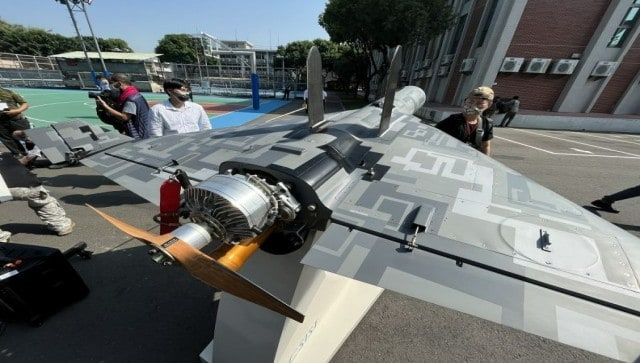Taiwan to develop 100-plus ‘radar-killing suicide drones’ by 2025
[ad_1]

Chien Hsiang suicide drones. Twitter/@SiteTaiwanInfo
The Taiwanese military has teamed up with a state-run weapons developer to produce 104 suicide drones by 2025, the National Chung-Shan Institute of Science and Technology (NCSIST) official said.
According to the news outlet Focus Taiwan, NCSIST official Chi Li-ping said that the drone’s production and delivery are on schedule. However, he did not how many drones the military has ordered.
The NCSIST first displayed the Chien Hsiang anti-radiation drone in the year 2017, drawing comparisons with the Israel Aerospace Industries’ Harpy anti-radiation weapon system.
Taiwan military invests $2.57 billion in drones
In 2019, the Taiwanese military confirmed its plans to invest $80 billion New Taiwan dollars ($2.57 billion) into the drone’s development over five years. The military had claimed that the cost of building an anti-radiation UAV would be lower than that for the TC-2A anti-radiation missile, or US-made AGM-88A/B HARM anti-radiation missile.
Taiwan to aim at China?
The truck-launched drones are designed to detect airborne, waterborne, grounded radar, and electromagnetic systems through their emissions and strike.
Chi said that the anti-radiation suicide drone had a maximum flight time of over five hours and will be able to strike targets 1,000 kms away. He added that its range allows it to target seaborne, coastal, and inland Chinese radar systems.
According to Alert 5, the drone weighs 6 kgs (13 pounds) and is 1.2 meters (4 feet) long and 2 meters (6.56 feet) wide. It finds the target with an electro-optical or infrared payload and selects them via an ‘intelligence object detection system’.
Focus Taiwan reported that the drone hovers over a target for several hours until it is activated, swooping down at a speed of 600 km (373 miles) per hour to crash into it. Chi believes that it is possible to deploy 12-drone clusters of the Chien Hsiang, which can take flight without a runway.
Chi said that the NCSIST is developing two versions of the drone- one for the attack while the other one as a decoy to protect essential systems from attacks by enemy anti-radiation missiles or UAVs. He further introduced the NCSIST’s rotary-wing unmanned aerial reconnaissance vehicle, which is capable of withstanding strong breezes of up to 50 km per hour.
Read all the Latest News, Trending News, Cricket News, Bollywood News,
India News and Entertainment News here. Follow us on Facebook, Twitter and Instagram.
[ad_2]
Source link


Comments are closed.